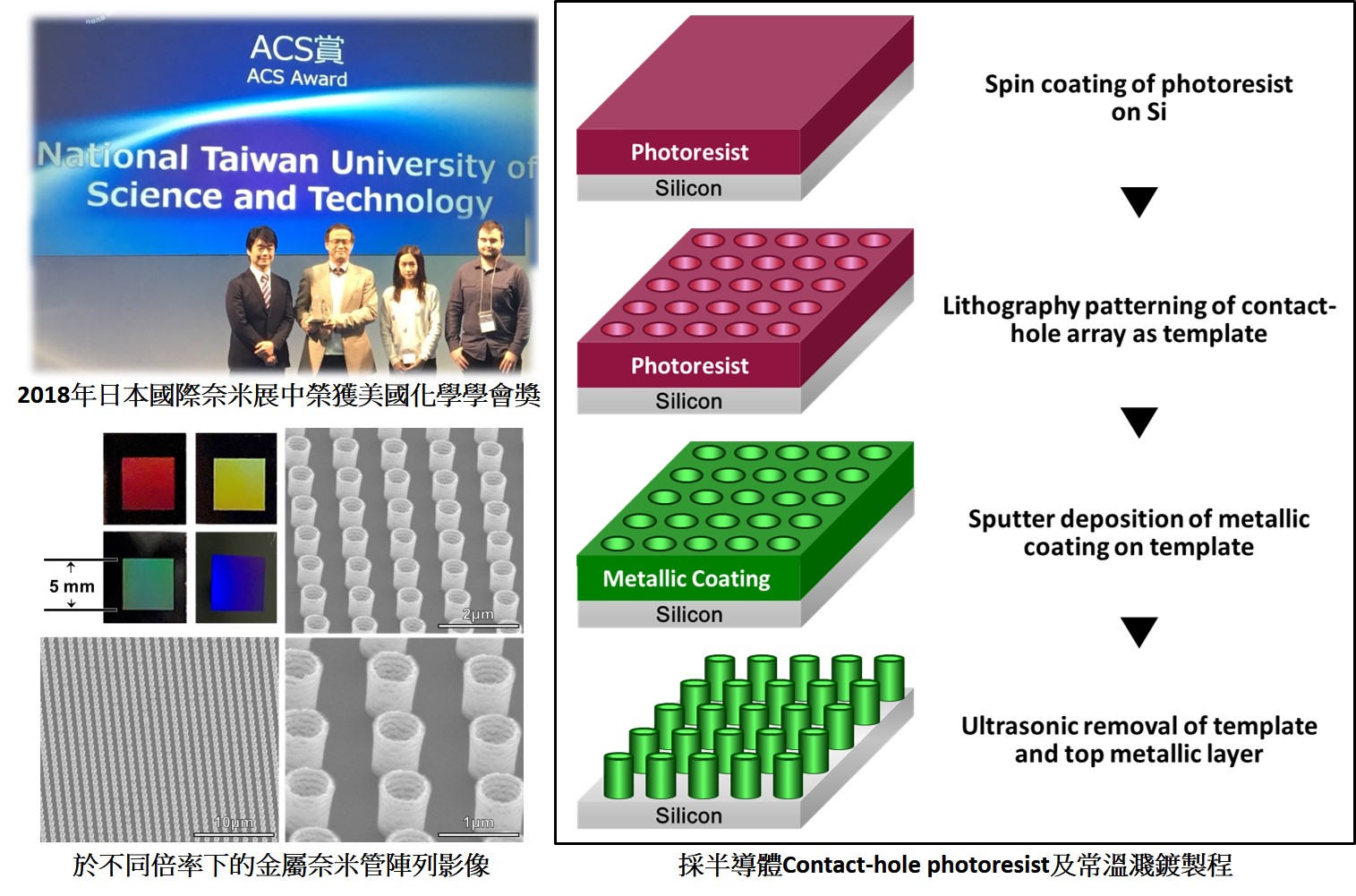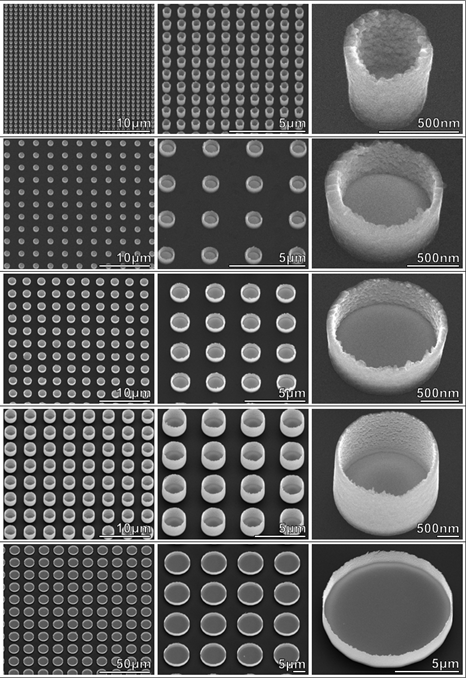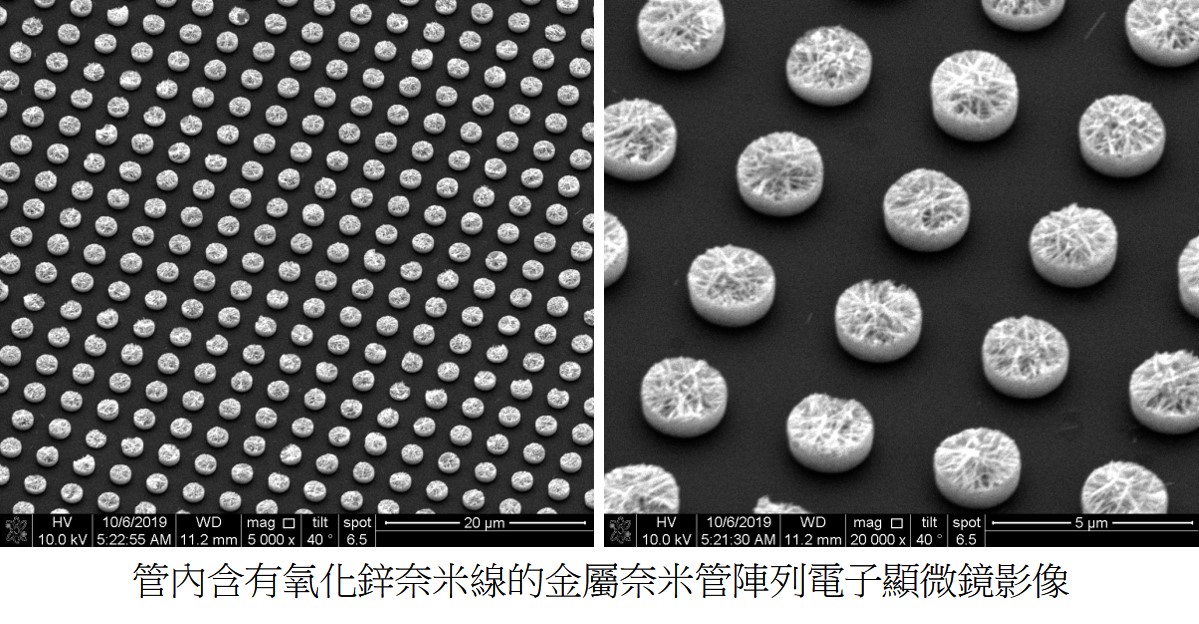| Technical Name | Scalable Metallic Nanotube Arrays | ||
|---|---|---|---|
| Project Operator | National Taiwan University of Science and Technology | ||
| Project Host | 朱瑾 | ||
| Summary | A team led by Professor Chu applies the award-winning metallic nanotube array (MeNTA) for use in a wide range of applications, including optoelectronic devices, and biosensing systems. At the Nano Tech 2018 in Tokyo, he received the American Chemical Society award for MeNTAs that can be fabricated using the method used in the microelectronic industries. The relatively straightforward MeNTA fabrication process, involving simple lithography and sputter deposition at room temperature, provides the scalability and flexibility required for very large-scale integration using a wide range of substrate materials. MeNTAs are mainly made up of various metals and alloys, the properties of which differ considerably from those of conventional nanomaterials. He is considered a pioneer in the development of MeNTAs. His accomplishments have been featured in leading publications in a variety of disciplines, including applied physics, materials science, and coatings. |
||
| Scientific Breakthrough | Important breakthroughs: (a) Metallic nanotubes: MeNTA is the first ever metal-based nanotube array and represents a considerable departure from conventional nanostructures of carbon, and oxides. (b) Homogeneous structure: MeNTA that can be amorphous results in materials of high uniformity and homogeneity. (c) Sensitive detection: Metals have a distinct advantage over oxides and polymers in terms of detection performance. (d) Multiple system options: Numerous metals and alloys can be used, including stainless steel, Au, Ag. (e) Scalability: The low-temperature processes permit a wide range of substrates and facilitate integration with other on-chip technologies. (f) Adaptability: The MeNTAs can be combined with other nanomaterials, such as ZnO, for forming various nanohybrids. |
||
| Industrial Applicability | The metallic nanotube array (MeNTA) can be used for use in a wide range of applications, including optoelectronic devices, drug delivery, catalytic and biosensing systems. This is because the low-temperature processes are used to fabricate MeNTAs, that permit a wide range of substrates and facilitate integration with other on-chip technologies. In addition, MeNTAs can be combined with other nanomaterials, such as ZnO, for forming various nanohybrids. Hence, MeNTAs are expected to have a wide spectrum of uses. |
||
| Keyword | metallic nanotube array lithography large-scale integration nanohybrids optoelectronic drug delivery catalytic biosensing nanomaterial ZnO | ||
- evil670127@mail.ntust.edu.tw
other people also saw







